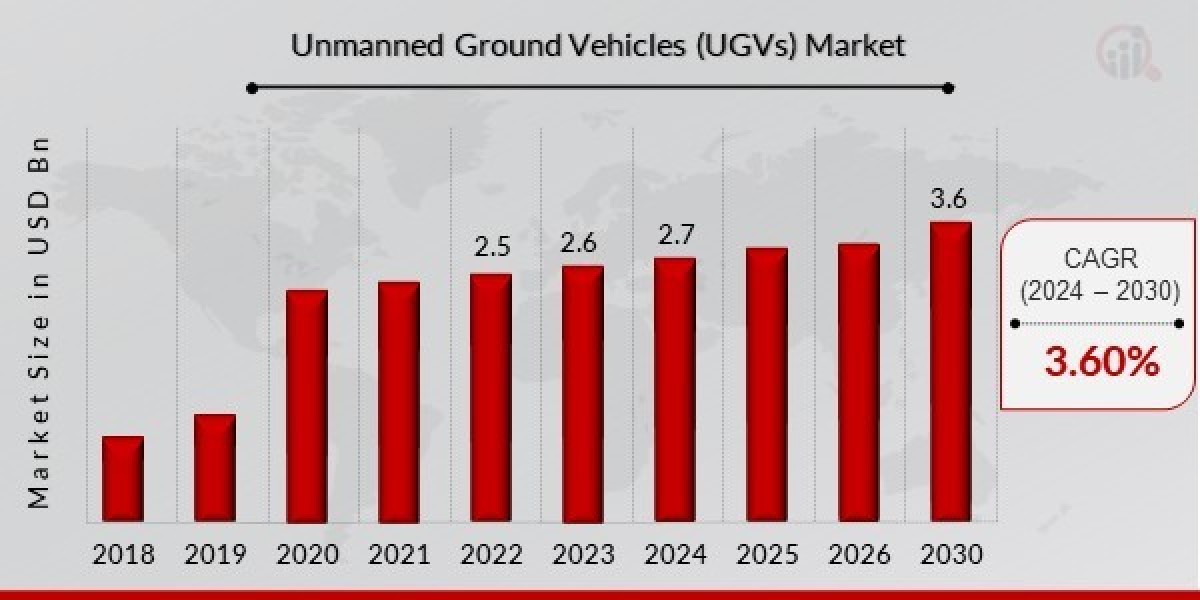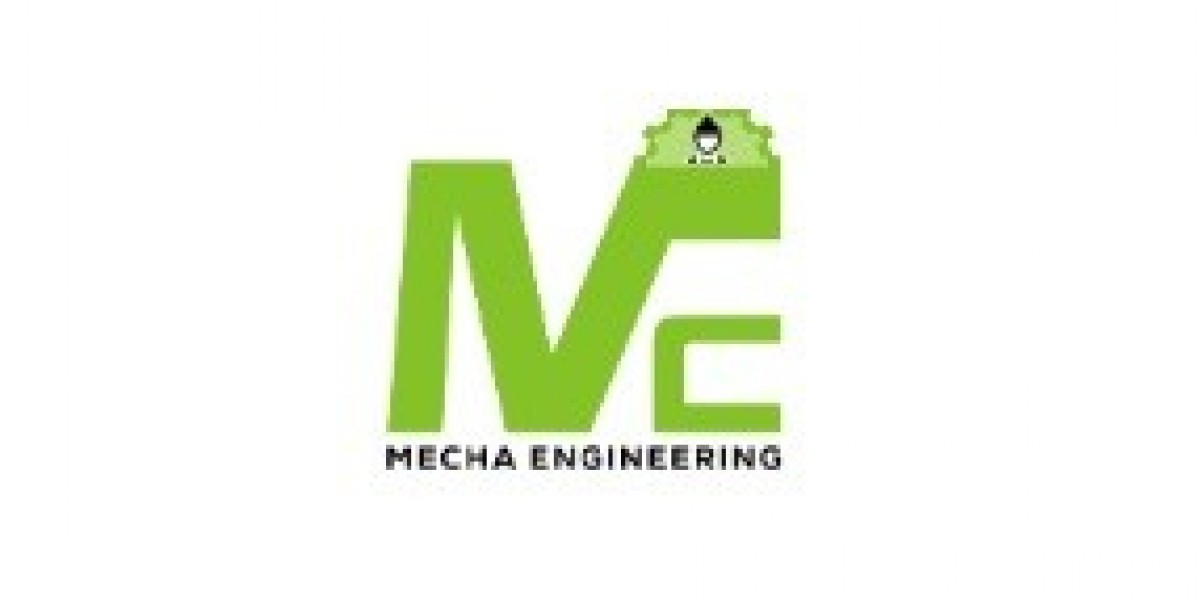In today’s rapidly evolving landscape of defense modernization, industrial automation, and smart technology integration, Unmanned Ground Vehicles (UGVs) have emerged as a critical component of next-generation mobility solutions. These remotely operated or autonomous vehicles, designed to traverse land without an onboard human presence, are transforming a range of sectors from military and public safety to agriculture, logistics, and mining.
Unmanned Ground Vehicles (UGVs) Market Size was valued at USD 2.6 billion in 2023. The unmanned ground vehicles (UGVs) market industry is projected to grow from USD 2.7 Billion in 2024 to USD 3.6 billion by 2030, exhibiting a compound annual growth rate (CAGR) of 3.60% during the forecast period (2024-2030).
With advancements in robotics, AI, and sensor technology, the global UGVs market is witnessing robust growth, driven by the need for efficiency, safety, and mission flexibility.
Understanding UGVs and Their Capabilities
UGVs are land-based robotic platforms capable of performing tasks in environments that are too dangerous, repetitive, or complex for human operators. Depending on the application, these vehicles can be equipped with tools, sensors, communication systems, and even weaponry. UGVs can be controlled remotely or operate autonomously using artificial intelligence, GPS navigation, computer vision, and LiDAR systems.
The versatility of UGVs lies in their adaptability. They can be deployed for surveillance and reconnaissance missions, explosive ordnance disposal (EOD), transportation of supplies, firefighting, crop monitoring, infrastructure inspection, and even urban policing. The growing demand for safe, smart, and cost-effective ground operations is driving their adoption across both military and commercial sectors.
Military and Defense: A Leading Market Segment
The defense sector remains the largest and most mature market for UGVs. Armed forces around the world are integrating UGVs into their operational strategies to enhance battlefield awareness, reduce soldier exposure to danger, and streamline logistics. These robotic vehicles can perform high-risk tasks such as bomb detection, combat support, and search-and-rescue operations without endangering human lives.
The rise in border tensions, terrorism, and asymmetric warfare has prompted countries like the United States, Russia, China, and Israel to invest heavily in unmanned ground systems. Military UGVs like the MAARS (Modular Advanced Armed Robotic System), Uran-9, and THeMIS are already being used for surveillance, tactical missions, and logistics support. With continued emphasis on modernization and AI integration, this segment is expected to maintain strong growth over the next decade.
Commercial Applications Expanding Rapidly
While defense applications dominate the UGVs market, commercial use cases are expanding rapidly. In the agriculture sector, UGVs are being deployed for soil sampling, seeding, spraying, and crop monitoring. These smart machines reduce labor costs and boost productivity by enabling precision farming techniques.
In the logistics and warehousing industry, autonomous ground vehicles are being used for transporting goods across factory floors and warehouse aisles. E-commerce and retail giants are investing in robotic fleets to enhance last-mile delivery and reduce human intervention.
The mining and oil & gas sectors are also adopting UGVs for exploration, inspection, and hazardous area operations. These vehicles can work in extreme conditions such as deep tunnels, radioactive zones, or fire-prone areas, reducing downtime and human risk.
Additionally, law enforcement and emergency response teams are using UGVs for surveillance, bomb disposal, and disaster response. Their ability to navigate rubble-strewn or chemically contaminated environments makes them ideal for post-crisis operations.
Get a Quote - Request a price quote for the report or specific research services.
Technological Advancements Driving the Market
The rapid evolution of robotics, AI, machine learning, and sensor fusion technologies is pushing the capabilities of UGVs to new levels. Modern UGVs are no longer just remote-controlled vehicles; they are intelligent systems capable of real-time decision-making, autonomous navigation, and multi-sensor data integration.
Edge computing and 5G connectivity are enabling faster communication between UGVs and control centers, improving responsiveness and operational control. LiDAR, GPS, infrared sensors, and computer vision are allowing these machines to navigate complex terrains, recognize objects, and avoid obstacles without human intervention.
Furthermore, modular design is becoming increasingly popular in UGV manufacturing. It allows users to easily reconfigure the vehicle for different tasks by swapping payloads, sensors, or tools. This modularity adds to the cost-effectiveness and versatility of UGVs across industries.
Regional Insights and Market Dynamics
North America currently leads the UGVs market due to its high military spending, advanced R&D infrastructure, and the presence of key players such as Lockheed Martin, Northrop Grumman, and General Dynamics. The U.S. Department of Defense continues to fund autonomous vehicle projects as part of its modernization roadmap.
However, the Asia-Pacific region is expected to witness the fastest growth in the coming years. Countries like China, India, South Korea, and Japan are investing in indigenous robotics programs to support both defense and commercial needs. Europe also remains a strong market, particularly in agricultural robotics and industrial automation.
Challenges and Future Outlook
Despite its growth, the UGVs market faces several challenges. High development and deployment costs, regulatory concerns, interoperability issues, and cybersecurity threats can slow adoption. Autonomous navigation in unpredictable environments and ethical considerations in military use also pose ongoing debates.
That said, the long-term outlook for the UGVs market remains highly optimistic. As robotics and AI technologies continue to mature, and as public and private stakeholders recognize the value of unmanned solutions, UGVs are expected to become a fundamental part of future operational frameworks.
About US
Market Research Future (MRFR) is a global market research company that takes pride in its services, offering a complete and accurate analysis with regard to diverse markets and consumers worldwide. Market Research Future has the distinguished objective of providing the optimal quality research and granular research to clients. Our market research studies by products, services, technologies, applications, end users, and market players for global, regional, and country level market segments, enable our clients to see more, know more, and do more, which help answer your most important questions.
Contact US
Market Research Future (part of Wantstats Research and Media Private Limited),
99 Hudson Street,5Th Floor New York 10013, United States of America
Sales: +1 628 258 0071 (US) +44 2035 002 764 (UK)
Email: Sales@marketresearchfuture.com
Website: www.marketresearchfuture.com








